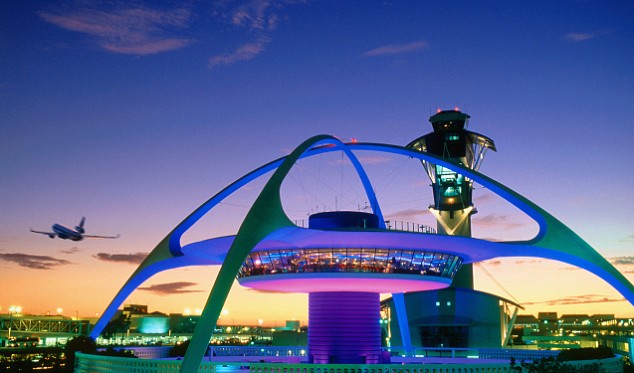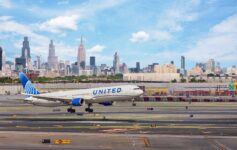
A spirited discussion commenced last week on the hub status of United Airlines at Los Angeles International Airport. I argued that LAX remained both a de facto and de jure United hub while Cranky argued that United had abandoned LAX as a hub.
We parsed stats including service reductions, ease of connections, international expansion, and terminal improvements. Ultimately, we both made relatively persuasive arguments, but both arguments were missing a key element.
Gary, politely critiqued my post, noting, “He offers reasons why it’s no longer practical for United to offer the kind of connectivity that they used to, which explains rather than refut[es] the claim that they no longer try to be the carrier in Los Angeles that takes you anywhere (especially intra-California) and that feeds international flights from everywhere. It’s the difference between a connecting hub and a focus city.”
And of course Gary’s last point is correct — really Cranky and I were looking at the wrong stats if thinking about a conventional definition of a hub, which is a point to conveniently funnel passengers between two cities.
I thought the issue was over, but then a reader named RHYS chimed in on both of our blogs with some very interesting stats. Again, I don’t have access to this raw data, but he claims to have consulted the same Diio source Cranky originally did. Here is what he found comparing UA mainline stats between 8/2006 with 8/2016 (essentially, the time period Cranky used in his original analysis:
- UA operated flights are down from 3,486 to 2,984
- Seats are down from 564,117 to 527,950 (6.4% decline)
- Available seat miles(ASM) are up from 1,008,903,166 to 1,080,303,305
All interesting tidbits that offer no compelling indication on UA’s hub status at LAX. But then it gets more interesting–
I used the first quarter of 2006 vs 2016 in comparing T-100 data (all passengers on a flight) versus DB1B DOT data which is local passengers originating as this is the most recent available. In 2006, United passengers through LAX were 43% local versus 57% connecting, where in 2016 the percentage has only shifted to 46% local versus 54% connecting. This largely reflects the loss of local UAX prop service and some flights going to codeshare partners offset by some new international flying in my estimation. Overall it looks like UA at LAX is still very much a hub based on the share of connecting traffic remaining high, LAX is just a 17% smaller hub in 2016 versus 2006.
If these numbers are correct, LAX is still very much a United hub in terms of its share of connecting traffic.
So the bottom line is that Cranky and I were both right, in part. United’s hub at LAX has shrunk from its position of dominance in 2006, even while Delta and American have grown stronger. Nevertheless, 54% of travelers flying United at LAX are connecting, down only 3% from a decade ago. That’s a compelling argument that United’s LAX station is still properly classified as a hub.
But it does bring up another point — if connections are poorly timed (as Cranky argues), then it must only be price that is driving passengers through LAX. It is a given already that LAX is a lower yield market than SFO for United, but by how much…? That’s my next inquiry. If passengers are just flying through LAX because it is cheap, then we may well continue to see a pullback from Los Angeles.




???
Who cares if it is a “hub” or not?
Corrected stats for you, still supports calling UA at LAX a hub, my quick lunch time exercise comparing carriers at LAX from 2006 to 2016 managed to exclude CO from UA 2006 stats, HP from AA 2006 stats, and FL (Air Tran) for Southwest back in 2006.
This is 5/2016 versus 5/2006 data, DOT T-100,
UA/CO mainline operated flights are down from 3,850 to 2,2451
Mainline seats are down from 645,795 to 425,112 (34% decline)
Available seat miles (ASM) is down from 1,139,816,255 to 701,597,324 (down 38%)
In 2006, United passengers through LAX were 46% local, 36% connecting through LAX, and the remaining 18% originating in LAX and connecting somewhere else on the UA network, where in 2016 the percentage has remained at 46% local, connecting percentage dropping only from 36% to 30%, and an increase from 18% to 23% originating in LAX and connecting elsewhere in UA’s network.. This largely reflects the loss of local UAX prop service and some flights going to codeshare partners offset by some new international flying in my estimation. UA’s connecting share of 30% compares to only 24% of AA’s traffic connecting thru LAX, and just behind Delta’s 33%. Overall it looks like UA at LAX is still very much a hub based on the share of connecting traffic remaining high, LAX is just a 29% smaller hub in 2016 versus 2006. Southwest for comparison, which doesn’t hub LAX, only has 12% of its traffic connecting or passing through LAX, despite a wide variety of spokes coming together in the city.
One other thing to note, Cranky brought up the question of whether UA was tanking fares to maintain connecting traffic through LAX. From 2006 to 2016, United’s connecting fares were up 49%, compared to AA which was up 37%, Southwest up 30%, and Delta who’s passengers connecting through LAX only paid 5% more in 2016 than 2006. Stage length changes over ten years could be an extenuating circumstance to a mild degree, but overall it looks like Delta is the one one who has slashed connecting fares to drive their connecting traffic, not UA.
Sorry for the original errors. Couldn’t find an email address to send my spreadsheet on your blog, but would be happy to forward that along to take a look at.
Having a brother who works for United Airlines, I know that United is trying to not dehub LAX. It is profitable, and there is plenty of connection availabilities as well as international destinations. It is clear, however, that San Francisco is the main pacific hub, but there is no reason why we should not have a hub in the second largest city in the country, he says.
And Sally, it is a very big deal? Hubs market airlines better than anything, and to say you have a hub in the second largest city in the country, along with each of the other top 4, is a huge statement to make, and will get customers to your business right off the bat.
When I looked at average connecting fare through LAX, it was $476, versus $406 for SFO in the first quarter of 2016 based on DOT DB1B data. Two things don’t make this comparison very meaningful though. When pulling fares based on UA code, a decent chunk of that traffic could be on a code-share Star Alliance carriers, a UA ticketed segment and code traveling on Air India or Lufthansa aircraft, and the average stage length for connections could be much shorter for SFO. There likely are a lot more Eugene-SFO-Burbank connections than shorter haul western connections that exist through LAX. Don’t imagine too many SAN-LAX-RNO type connections, but more long haul, thus inflating LAX’s average connecting fare.